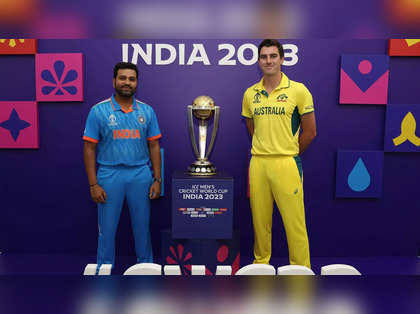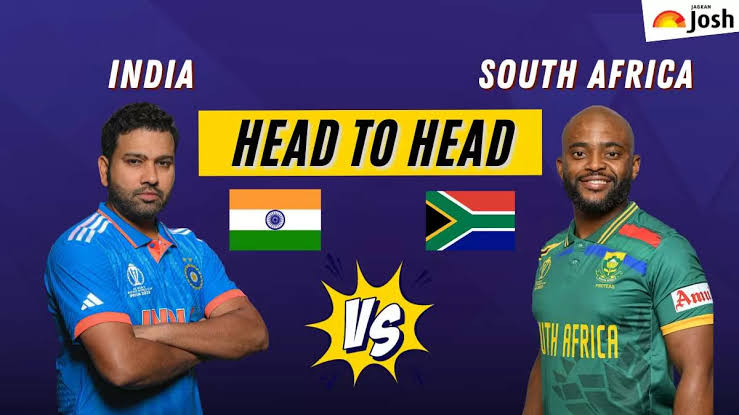Australian Men’s Cricket Team vs India National Cricket Team: A Comprehensive Timeline

The cricketing rivalry between Australia and India is one of the most intense and celebrated in the sport. Over the years, both teams have produced memorable moments that have not only defined their encounters but have also contributed significantly to the history of cricket. Here’s a detailed look at the timeline of this storied rivalry, highlighting key series and landmark matches.
Early Encounters (1947-1970)
The cricketing relationship between India and Australia began post World War II, with India touring Australia in 1947. The series was heavily dominated by Australia, showcasing their might in the sport. During this period, the encounters were infrequent, but each series laid the groundwork for a competitive sporting relationship.
The Rise of Competitive Spirit (1970-1990)
By the 1970s and 80s, India started to build a team that could compete more effectively on the international stage. The 1980-81 series in Australia marked a significant moment when India managed to secure a remarkable victory in Melbourne, thanks to a heroic bowling performance by Kapil Dev and an unforgettable innings by Sunil Gavaskar. This era saw India beginning to assert itself, slowly shifting the balance of power.
Border-Gavaskar Trophy Inception (1996)
The Border-Gavaskar Trophy was introduced in 1996, named after legendary cricketers Allan Border of Australia and Sunil Gavaskar of India, to celebrate the rivalry and respect between the two nations. The introduction of this trophy marked a new era where every encounter between these teams became even more competitive, with something substantial at stake.
The Turn of the Century (2000-2010)
The early 2000s saw some of the most thrilling cricket between the two nations. The 2001 series in India, famously known as the “series of comebacks,” particularly the Kolkata Test where India followed on and then went on to win the Test, is regarded as one of the greatest Test matches ever played. Players like Sachin Tendulkar, Ricky Ponting, and Anil Kumble became central figures during these clashes.
Dominance and Rivalry (2011-2020)
This period was marked by home dominance with both teams proving nearly invincible on their turf. The 2011-12 series in Australia saw the hosts whitewash India 4-0, asserting a period of dominance with players like Michael Clarke and David Warner at the helm. Conversely, when Australia toured India, they faced severe challenges, highlighted by the 2013 Test series where India returned the favor with a 4-0 series win.
Recent Years and Future Prospects (2021-Present)
The rivalry took an exciting turn in the recent 2020-21 series, where a depleted Indian team, led by Ajinkya Rahane in the absence of Virat Kohli, defied all odds to defeat Australia in their backyard. The victory at the Gabba, where Australia had not lost since 1988, was particularly sweet for India. This series not only added a new chapter to their rivalry but also showcased the depth and resilience of Indian cricket.
As both teams continue to evolve, the future encounters promise to be as exciting as the past. The rise of new talents in both teams ensures that the Australia-India cricket rivalry will remain one of the most watched and celebrated in the cricketing world.
The ongoing interactions between the Australian Men’s Cricket Team and the India National Cricket Team continue to enrich the tapestry of international cricket, making each of their meetings a highly anticipated event for cricket fans around the world.
Frequently Asked Questions: Australia vs India Cricket Rivalry
Q1: When did India first win a Test series in Australia? A1: India won its first Test series in Australia during the 2018-2019 tour. Under the captaincy of Virat Kohli, India secured a historic 2-1 victory, marking a significant achievement in Indian cricket history.
Q2: How many times has the Border-Gavaskar Trophy been contested, and who has won more? A2: The Border-Gavaskar Trophy has been contested 15 times from its inception in 1996 up to 2021. Australia has won it 9 times, while India has clinched it 8 times, reflecting a closely fought contest over the years.
Q3: What is the significance of the Kolkata Test in 2001? A3: The Kolkata Test of 2001 is considered one of the greatest Test matches ever played. After being forced to follow on, India staged an extraordinary comeback to defeat Australia. V.V.S. Laxman scored a magnificent 281, and Rahul Dravid supported with 180 runs, which turned the match and the series in India’s favor.
Q4: Who are the top run-scorers and wicket-takers in the Australia-India Test matches? A4: Sachin Tendulkar is the top run-scorer in Test matches between India and Australia, accumulating over 3,600 runs. Among bowlers, Anil Kumble leads with 111 wickets in the contests between these two teams.
Q5: What was unique about the 2020-2021 Border-Gavaskar series? A5: The 2020-2021 Border-Gavaskar series was unique because India, battling injuries and without several key players including their regular captain Virat Kohli, managed to defeat Australia in Australia. The series is particularly famous for the Brisbane Test where India broke Australia’s 32-year unbeaten streak at the Gabba, securing a thrilling win and clinching the series.
Q6: Which player has scored the most centuries in the Australia-India Test encounters? A6: Sachin Tendulkar leads with the most centuries in Test matches between these two teams, having scored 11 centuries over his career.
Q7: Have there been any tied Test matches between India and Australia? A7: Yes, there has been one tied Test match between India and Australia, which took place in Chennai in 1986. It is one of only two tied Tests in the history of Test cricket.
Q8: What role do spin bowlers play in the Australia-India cricket rivalry? A8: Spin bowlers have traditionally played a crucial role in the rivalry, particularly in matches played in India. Spinners like Shane Warne, Anil Kumble, and more recently, Nathan Lyon and Ravichandran Ashwin, have had significant impacts due to the spin-friendly conditions in India.
Q9: Which venue in Australia is considered the most challenging for the Indian team? A9: The WACA in Perth has traditionally been considered the most challenging venue for the Indian team due to its fast and bouncy pitch, which favors the Australian fast bowlers. However, India’s win in the 2020-2021 series at the Gabba, another challenging ground, was a significant achievement.
Q10: How has the captaincy of Virat Kohli influenced the India-Australia cricket rivalry? A10: Virat Kohli’s aggressive and proactive captaincy style has significantly influenced the rivalry, infusing a new level of intensity and competitiveness. Kohli’s leadership was instrumental in India securing their first-ever Test series win in Australia in 2018-2019, marking a new era in the rivalry.


